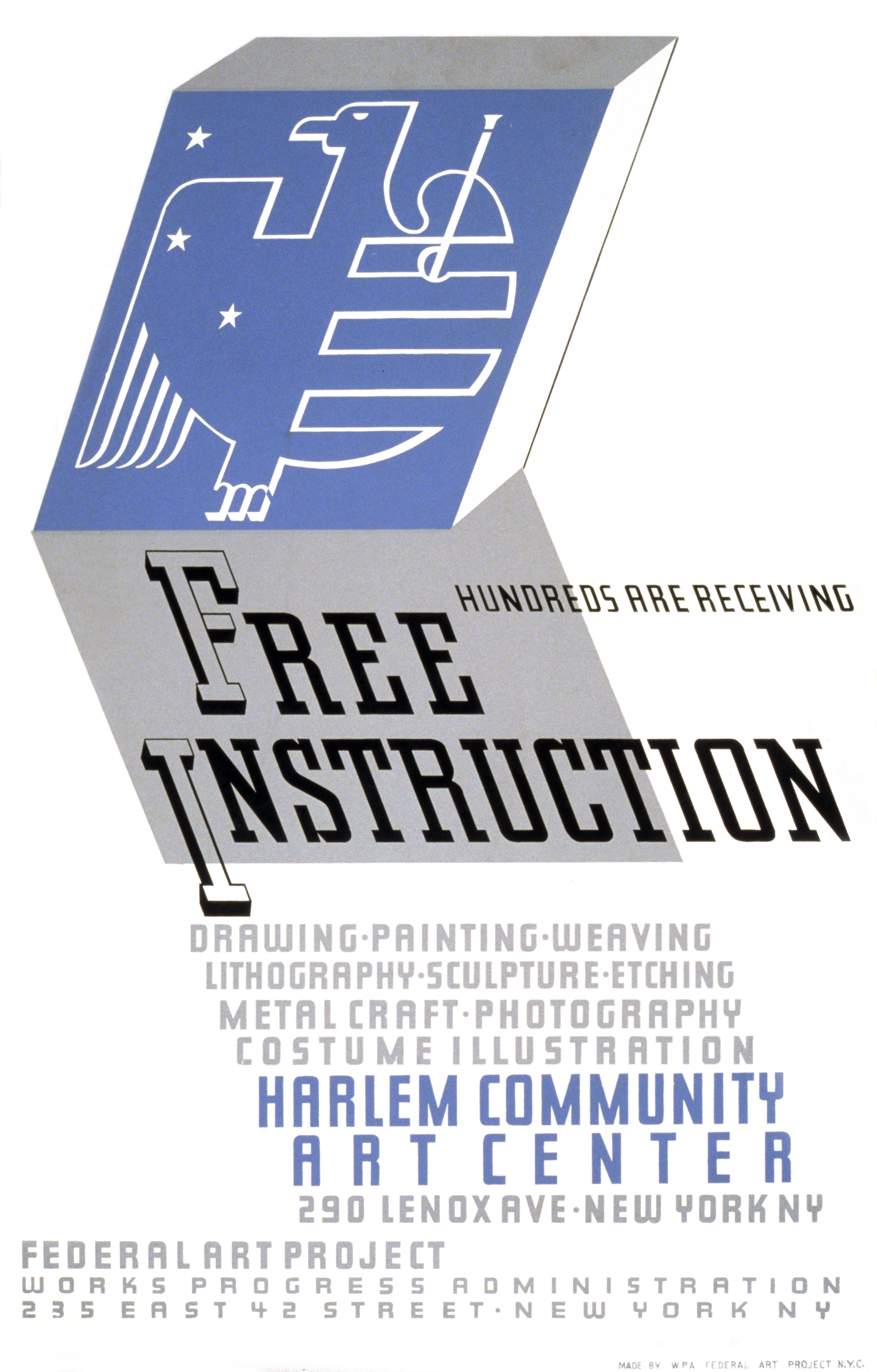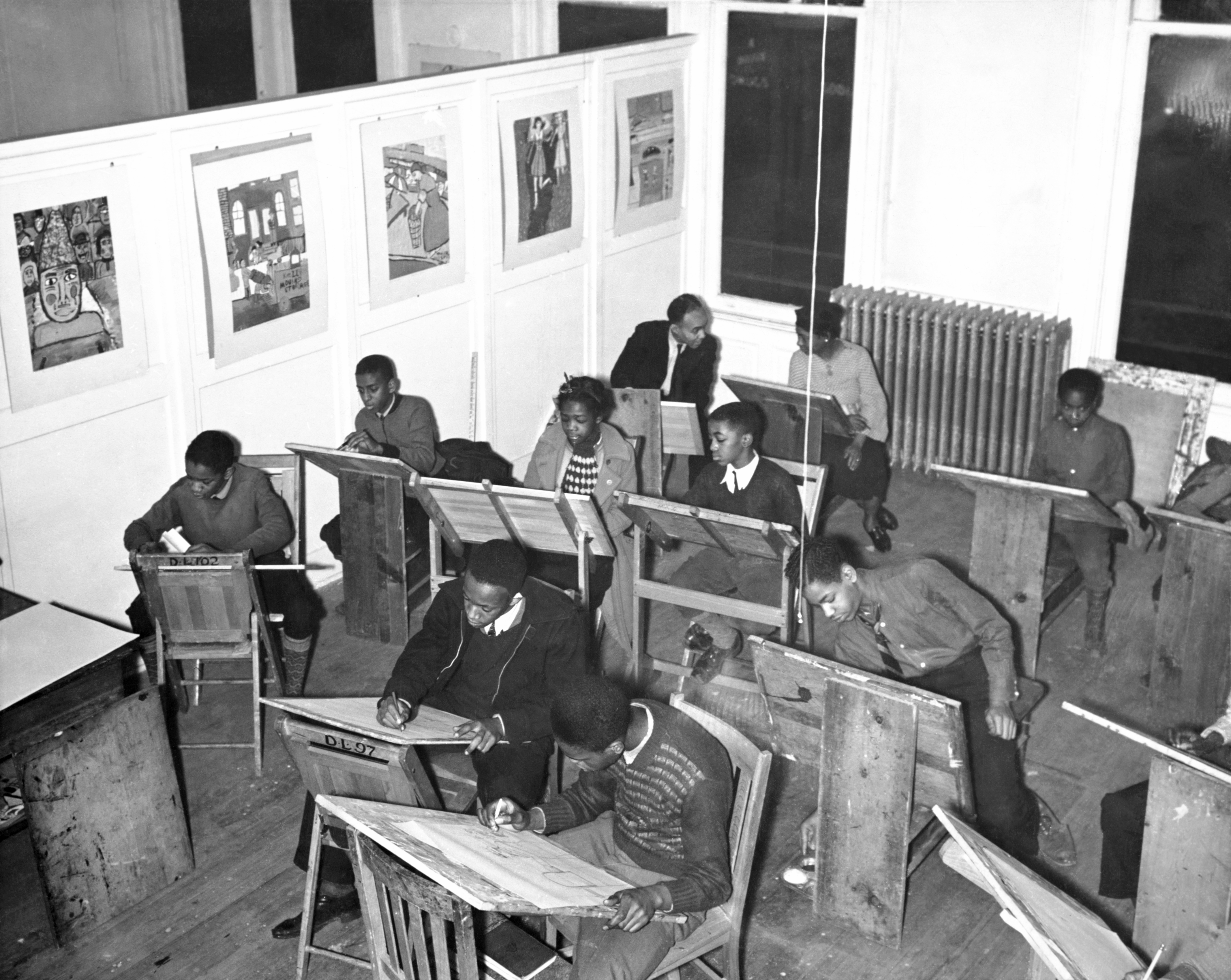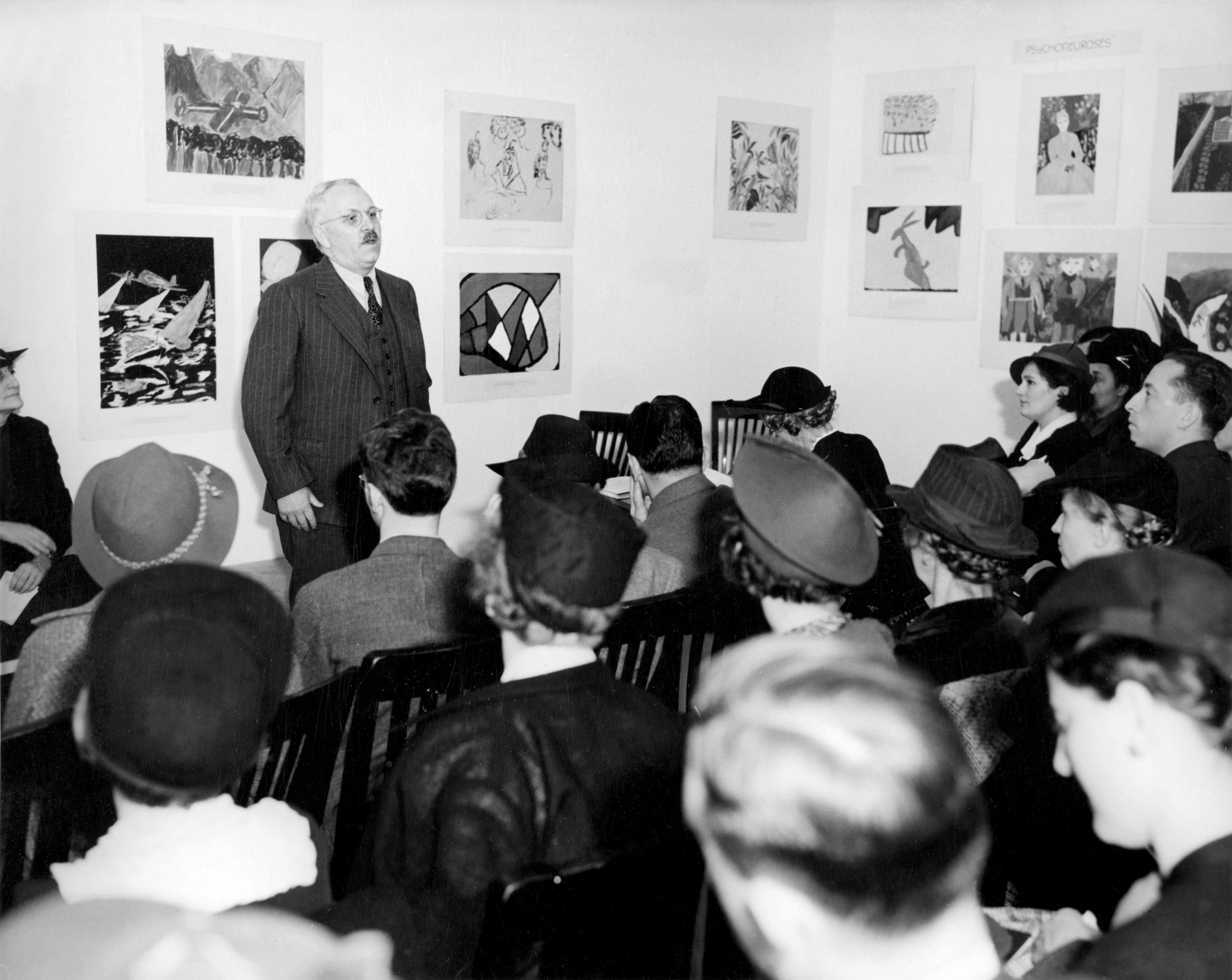Harlem Community Art Center on:
[Wikipedia]
[Google]
[Amazon]
 The Harlem Community Art Center was a
The Harlem Community Art Center was a

 In its first 16 months, 70,592 people attended Harlem Community Art Center activities and more than 1,500 took part in day or evening classes in drawing, painting, sculpture, printmaking and design. Artists who taught or studied at the center include
In its first 16 months, 70,592 people attended Harlem Community Art Center activities and more than 1,500 took part in day or evening classes in drawing, painting, sculpture, printmaking and design. Artists who taught or studied at the center include 
 *"WPA art comes to Harlem." ''
*"WPA art comes to Harlem." ''
 The Harlem Community Art Center was a
The Harlem Community Art Center was a Federal Art Project
The Federal Art Project (1935–1943) was a New Deal program to fund the visual arts in the United States. Under national director Holger Cahill, it was one of five Federal Project Number One projects sponsored by the Works Progress Administrati ...
community art center that operated from 1937 to 1942. It influenced various budding artists intent on depicting Harlem and led to the formation of the Harlem Arts Alliance. It became a countrywide exemplar for others, notably the South Side Community Art Center
The South Side Community Art Center is a community art center in Chicago that opened in 1940 with support from the Works Progress Administration's Federal Art Project in Illinois. Opened in Bronzeville in an 1893 mansion, it became the first blac ...
in Chicago.
History

Augusta Savage
Augusta Savage (born Augusta Christine Fells; February 29, 1892 – March 27, 1962) was an American sculptor associated with the Harlem Renaissance. She was also a teacher whose studio was important to the careers of a generation of artists who w ...
led various art classes in Harlem, and several other art leaders collaborated with the 135th Street Branch of the New York Public Library in establishing community workshops. The Harlem YMCA also held art classes between 1934 and 1935 led by sculptor William Artis.
The idea for the Harlem Community Art Center came from African-American
African Americans (also referred to as Black Americans and Afro-Americans) are an Race and ethnicity in the United States, ethnic group consisting of Americans with partial or total ancestry from sub-Saharan Africa. The term "African American ...
artists in the Harlem Artists Guild. They envisioned a community space free to all, making art instruction accessible. The Harlem Community Art Center was based on the ideal that art was central to community, and aspired to be both a space for exposing people to art and an institution for developing African-American artists.
The Harlem Community Art Center was a WPA
WPA may refer to:
Computing
*Wi-Fi Protected Access, a wireless encryption standard
*Windows Product Activation, in Microsoft software licensing
* Wireless Public Alerting (Alert Ready), emergency alerts over LTE in Canada
* Windows Performance An ...
-sponsored center in operation from November 1937 to 1942. The center was first directed by Augusta Savage
Augusta Savage (born Augusta Christine Fells; February 29, 1892 – March 27, 1962) was an American sculptor associated with the Harlem Renaissance. She was also a teacher whose studio was important to the careers of a generation of artists who w ...
, and Gwendolyn Bennett
Gwendolyn B. Bennett (July 8, 1902 – May 30, 1981) was an American artist, writer, and journalist who contributed to '' Opportunity: A Journal of Negro Life'', which chronicled cultural advancements during the Harlem Renaissance. Though ofte ...
assumed the role afterward. It is widely considered a focal arena for the Harlem Renaissance
The Harlem Renaissance was an intellectual and cultural revival of African American music, dance, art, fashion, literature, theater, politics and scholarship centered in Harlem, Manhattan, New York City, spanning the 1920s and 1930s. At the t ...
.
Significance
 In its first 16 months, 70,592 people attended Harlem Community Art Center activities and more than 1,500 took part in day or evening classes in drawing, painting, sculpture, printmaking and design. Artists who taught or studied at the center include
In its first 16 months, 70,592 people attended Harlem Community Art Center activities and more than 1,500 took part in day or evening classes in drawing, painting, sculpture, printmaking and design. Artists who taught or studied at the center include Charles Alston
Charles Henry Alston (November 28, 1907 – April 27, 1977) was an American painter, sculptor, illustrator, muralist and teacher who lived and worked in the New York City neighborhood of Harlem. Alston was active in the Harlem Renaissance; Als ...
, Henry Bannarn, Romare Bearden
Romare Bearden (September 2, 1911 – March 12, 1988) was an American artist, author, and songwriter. He worked with many types of media including cartoons, oils, and collages. Born in Charlotte, North Carolina, Bearden grew up in New York City a ...
, Selma Burke
Selma Hortense Burke (December 31, 1900 – August 29, 1995) was an American sculptor and a member of the Harlem Renaissance movement. Burke is best known for a bas relief portrait of President Franklin D. Roosevelt which may have been the model ...
, Ernest Crichlow
Ernest Crichlow (June 19, 1914 – November 10, 2005) was an American social realist artist.
Early life and career
Crichlow was born in Brooklyn, New York, in 1914 to Barbadian immigrants. He studied art at the School of Commercial Illustrating ...
, Aaron Douglas, Elton Fax
Elton Clay Fax (October 9, 1909 – May 13, 1993) was an American illustrator, cartoonist, and writer.
Early life and education
Elton Clay Fax was born in 1909, in Baltimore, Maryland, the son of Mark Oakland Fax and Willie Estelle Fax. His father ...
, Sargent Johnson
Sargent Claude Johnson (October 7, 1888 – October 10, 1967) was one of the first African-American artists working in California to achieve a national reputation.
, William Henry Johnson, Langston Hughes
James Mercer Langston Hughes (February 1, 1901 – May 22, 1967) was an American poet, social activist, novelist, playwright, and columnist from Joplin, Missouri. One of the earliest innovators of the literary art form called jazz poetry, Hug ...
, Ronald Joseph, Robert Blackburn, Jacob Lawrence
Jacob Armstead Lawrence (September 7, 1917 – June 9, 2000) was an American painter known for his portrayal of African-American historical subjects and contemporary life. Lawrence referred to his style as "dynamic cubism", although by his own ...
, Norman Lewis, Claude McKay, James Lesene Wells and Richard Wright.
The center also had the chance to influence more than just adults "And who are these people who have been reached by the Center? Exactly 2,467 children and adults have registered in the art classes. More than 23,989 people have participated in the Center's extension activities, lectures, and demonstrations. Thousands of others come to the Center regularly to see the exhibitions and to attend other special events". Psychiatric Wards would send mentally ill children to the center and they flourished.
The Harlem Community Art Center had a multiethnic faculty and a diverse student population was also diverse. Students ranged from established Harlem artists to children from New York psychiatric hospitals who benefitted from creative activities.

Further reading
 *"WPA art comes to Harlem." ''
*"WPA art comes to Harlem." ''Architectural Forum
''Architectural Forum'' was an American magazine that covered the homebuilding industry and architecture. Started in Boston, Massachusetts, in 1892 as ''The Brickbuilder'', it absorbed the magazine ''Architect's World'' in October 1938. Ownership ...
'' 68 (February 1938 supplement): 8. Account of the opening of the Harlem Community Art Center including photographs of those attending the opening: Augusta Savage (artist); Asa Philip Randolph (labor leader); Holger Cahill
Edgar Holger Cahill (January 13, 1887 – July 8, 1960) was an Icelandic-American curator, writer, and arts administrator who served as the national director of the Federal Art Project of the Works Progress Administration during the New Deal in th ...
, and James Weldon Johnson
James Weldon Johnson (June 17, 1871June 26, 1938) was an American writer and civil rights activist. He was married to civil rights activist Grace Nail Johnson. Johnson was a leader of the National Association for the Advancement of Colored Peop ...
(poet).
* Randolph, A. Philip. "Harlem's art center." ''Art Digest
''Arts Magazine'' was a prominent monthly magazine devoted to fine art. It was established in 1926 and last published in 1992.
History Early years
Launched in 1926 and originally titled ''The Art Digest,'' it was printed semi-monthly from Octob ...
'' 12 (January 1, 1938): 15. pp. 115–116, The New Deal Fine Arts Projects. Harlem Community Art Center (270 Lenox Avenue
Lenox Avenue – also named Malcolm X Boulevard; both names are officially recognized – is the primary north–south route through Harlem in the upper portion of the New York City borough of Manhattan. This two-way street runs from F ...
) sponsored by the FAP and the Harlem Citizen's Sponsoring Committee opened December 20, 1937. Includes the text of the comments by A. Philip Randolph, president of the Brotherhood of Sleeping Car Porters
Founded in 1925, The Brotherhood of Sleeping Car Porters (BSCP) was the first labor organization led by African Americans to receive a charter in the American Federation of Labor (AFL). The BSCP gathered a membership of 18,000 passenger railwa ...
and chairman of the Harlem Citizen's Sponsoring Committee.
*Federal Art Project
The Federal Art Project (1935–1943) was a New Deal program to fund the visual arts in the United States. Under national director Holger Cahill, it was one of five Federal Project Number One projects sponsored by the Works Progress Administrati ...
. Exhibition of Negro cultural work on the Federal Art Projects of New York City Art-Music-Writers-Theatre-Historical Records. FAP: New York, 1939. 4 p. Mimeographed. Exhibition, February 10–24, 1939. Exhibition held at the Harlem Community Art Center of work by all branches of the WPA's Federal One. Includes work from the FAP's painting and sculpture divisions and by children taught in the art teaching division. Found in AAA reel 1085. 153–156.
*Dows, Owen. "Art for housing tenants". ''Magazine of Art'' 31 (November 1938): 616–23, 662. Excellent account of the use of FAP work in Harlem tenements
A tenement is a type of building shared by multiple dwellings, typically with flats or apartments on each floor and with shared entrance stairway access. They are common on the British Isles, particularly in Scotland. In the medieval Old Town, i ...
. Numerous b/w illustrations of the work (many works of sculpture); feels the tenements project is a good idea and needs to be expanded.
*"Cultural front." ''Direction'' 1 (November–December 1938): 28. Note on a benefit dance to support the Harlem Art Center to be held November 12, 1938; note on the "Four Unit Exhibition" being held at the Federal Art Gallery (NYC)
*"Harlem goes to Chicago." ''Art Digest'' 12 (August 1, 1938): 6. Note on the exhibition of 40 works done by children and adults at the Harlem Community Art Center at the Chicago YWCA through August 20, 1938.
*"Black art: paintings by Negroes." ''Direction'' 1 (April 1938): 16-17. Praise for the creation of the Harlem Art Center; mostly illustrations. B/W photographs of work by Vertis Hayes, Henry Holmes, and Palmer Hayden.
*Federal Art Project. New York City. Federal Art Centers of New York. FAP: New York, 1937? 8 pp. A brief overview of art in America and the functions of the FAP. Brief description of what the FAP art centers do, particularly in New York City. Brief descriptions of the four art centers in New York: Contemporary Art Center; Brooklyn Community Art Center; Harlem Community Art Center; and the Queensboro Community Art Center. Found in AAA Reel 1085.19-27.
*"MAAP , Mapping the African American Past." MAAP. N.p., n.d. Web. 27 May 2016.
*"Creative Space: Fifty Years of Robert Blackburn's Printmaking WorkshopMilieu: The Harlem Community Art Center and the WPA." Milieu: The Harlem Community Art Center and the WPA. N.p., n.d. Web. 27 May 2016.
References
External links
{{Include-USGov, agency=Works Progress Administration Harlem Harlem Renaissance Federal Art Project Works Progress Administration in New York City Community centres Arts centers in New York City